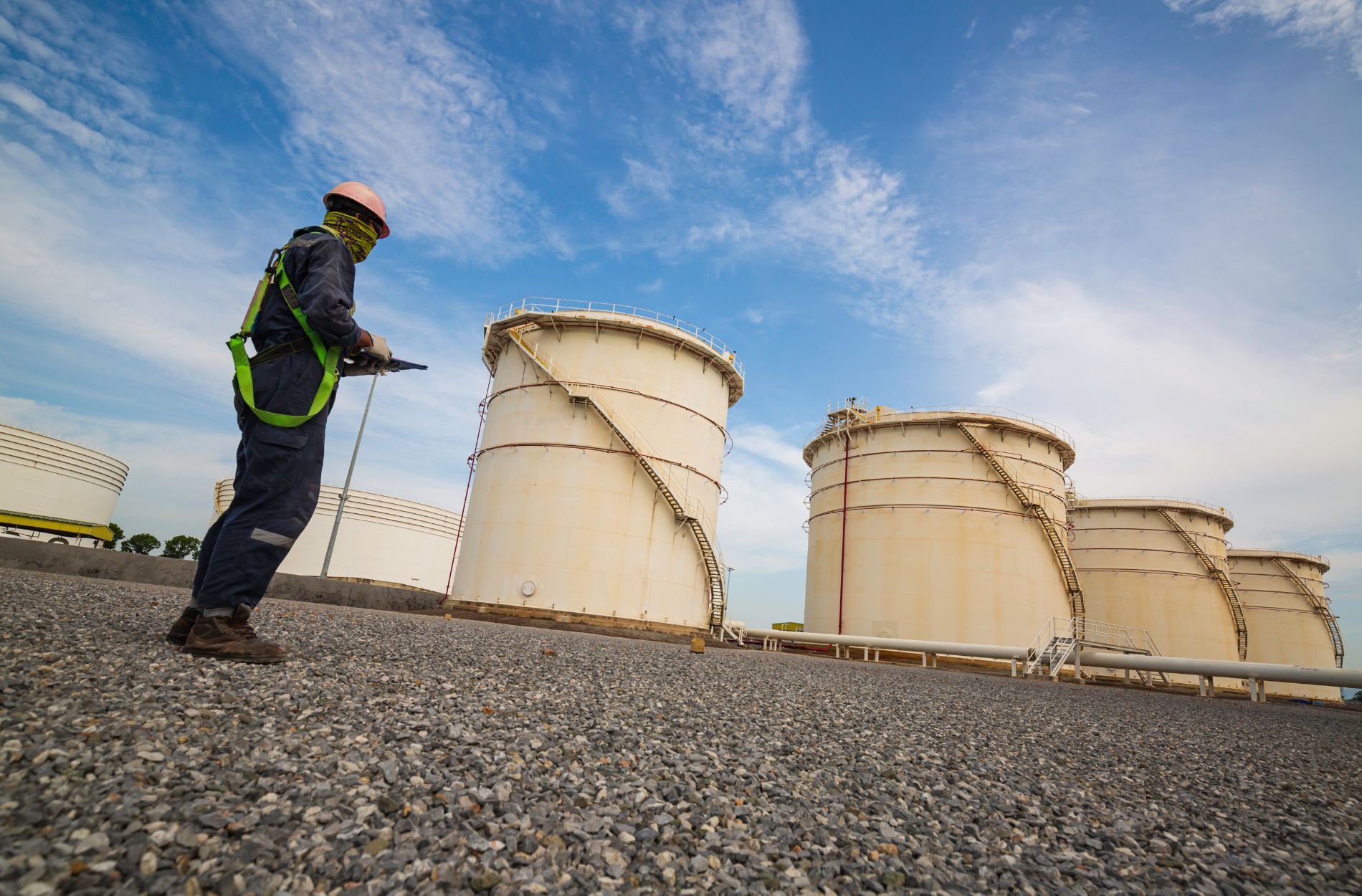
Above ground storage tanks play a critical role in numerous industries, functioning as vital storage solutions for vital resources such as water, fuels, and chemicals. Given their importance and potential impact on business operations, tank owners or operators must ensure these tanks remain pristine throughout their lifespan. Regular tank inspections not only gauge the integrity and safety of your storage facility but also pave the way for proactive maintenance and repairs, averting possible disasters. As a committed tank owner or operator, understanding the value of tank inspections will help you maintain the efficiency, safety, and performance of your facility’s storage assets.
At ATM Tanks, our objective is to guide you through an in-depth understanding of tank inspections, revealing their role in detecting issues, mitigating risks, and maintaining the overall health of your tanks. In this comprehensive article, we will expound on the various types of tank inspections, highlighting the benefits and equipping you with vital information on choosing the most appropriate inspection methods for your specific tank storage needs. Partnering with ATM Tanks will empower you to take a proactive approach towards tank management, enabling you to capitalise on the advantages of timely and effective inspections.
Embark on this journey with us as we explore the intricacies of tank inspections, investigating their indispensable role in upholding the safety, performance, and longevity of your above ground storage tanks. By harnessing the expertise and experience of ATM Tanks, you can optimise your tank inspection strategies, ensuring the seamless functioning and protection of your valuable storage assets.
Are you ready to discover the secrets of performing regular tank inspections diligently? Let ATM Tanks guide your voyage towards a clearer understanding of tank inspection best practices and their impact on your facility’s storage capabilities and safety standards.
The Importance of Regular Tank Inspections
Regular tank inspections can offer numerous benefits to your facility’s storage capabilities, encompassing aspects like safety, efficiency, and compliance:
1. Hazard Detection: Timely inspections can unveil potential issues, such as corrosion, leaks, or deterioration, allowing you to engage in proactive maintenance and repairs to prevent hazardous situations.
2. Increased Efficiency: By detecting and addressing tank defects early, you can increase the overall efficiency of your storage assets, ensuring seamless operation with minimal downtime.
3. Regulatory Compliance: Regular inspections ensure adherence to regulatory requirements, such as those outlined by the Australian Standards, API, or Dangerous Goods Code, avoiding potential fines or penalties.
Types of Tank Inspections
Several inspection methods can be employed to gauge the condition of your tank, catering to varying levels of examination intensity and specificity:
1. Visual Inspections: A basic visual inspection provides a preliminary assessment of your tank, focusing on identifying obvious damage or vulnerabilities, such as corrosion, cracks, or surface irregularities.
2. Ultrasonic Testing: Ultrasonic testing assists in measuring the thickness and condition of tank walls, using sound waves to detect potential corrosion or metal loss from the interior or exterior of the tank.
3. Magnetic Flux Leakage (MFL) Testing: MFL testing uses powerful magnets to detect areas of metal loss, corrosion, or leakage in the tank’s walls, pinpointing problem areas with high accuracy.
4. Radiography Testing: Radiography testing utilises X-ray or gamma ray techniques to inspect welds, seams, and other critical structural components of the tank, highlighting potential weak points or defects.
Conducting Tank Inspections
To ensure that tank inspections are carried out effectively and comprehensively, follow these steps to enhance accuracy and efficiency:
1. Choose the Appropriate Inspection Method: Opt for an inspection method that serves your facility’s needs and type of tank, aligning with the stored material, tank size, and environmental factors.
2. Prepare the Tank for Inspection: Remove any obstructions, clean the tank, and establish a safe working environment for the inspection team, ensuring they can thoroughly examine the tank without safety concerns.
3. Perform the Inspection: Following the selected method, carefully inspect the tank for damages, corrosion, leaks, or deterioration, using tools and techniques specific to each inspection type.
4. Document and Analyse Findings: Document the inspection’s findings, including photographic records, measurements, and identified issues, for proper analysis and subsequent maintenance or repair planning.
Post-Inspection Maintenance and Repairs
After completing the tank inspection, initiate any necessary maintenance or repair activities to address the identified issues:
1. Prioritise Repairs: Analyse the inspection findings and determine repair priorities based on potential risks and hazards. Address urgent repairs immediately to prevent escalation or potential damage.
2. Select Repair Methods: Choose appropriate repair methods that align with the identified issue, considering factors like tank material, location, and impact on facility operations.
3. Manage Repair Processes: Coordinate maintenance and repair activities effectively, ensuring proper communication between technicians, inspectors, and facility staff to guarantee adherence to safety protocols and efficient repair procedures.
4. Update Records and Conduct Follow-up Inspections: Update facility records with details of completed repairs and maintenance activities and schedule follow-up inspections to confirm the success of corrective measures.
Conclusion
As a tank owner or operator, understanding the importance of regular tank inspections is crucial, ensuring that your tanks are maintained at their optimum capacity and contributing to the safety and efficiency of your facility. ATM Tanks stands ready to guide you through conducting effective tank inspections; from choosing the appropriate inspection methods to managing post-inspection maintenance and repairs, our expertise ensures that your tank storage assets are well protected.
Take the initiative today to engage in a proactive approach to tank management, trusting in the knowledge and support of ATM Tanks to maximise your facility’s storage capabilities and safety standards. Contact our team to learn more about the value of regular tank inspections and how we can assist you in achieving top-notch tank storage performance.
- How to Fix Leaks in Your Water Storage Tanks - December 14, 2025
- Effective Techniques for Thorough Tank Cleaning - December 14, 2025
- The Benefits of ROV Tank Inspections for Maintenance - December 14, 2025






